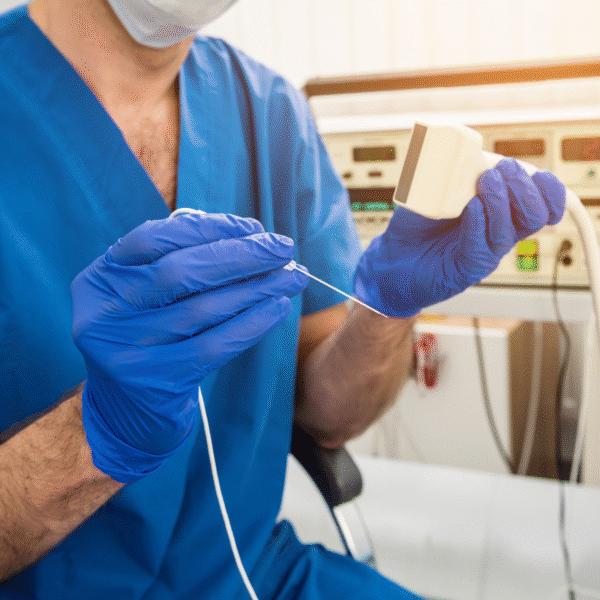
Radiofrequency Ablation: A Minimally Invasive Option for Joint Pain
Living with chronic joint pain can be exhausting. Whether it stems from arthritis, degenerative changes, or previous injury, ongoing pain can limit your ability to move comfortably and enjoy daily activities. For many patients, traditional approaches like physical therapy, medications, or joint injections provide only temporary relief. Surgery may feel like too big of a step—or not an option at all. That’s where radiofrequency ablation (RFA) comes in.
What Is Radiofrequency Ablation?
Radiofrequency ablation is a minimally invasive outpatient procedure designed to relieve chronic joint pain. It works by targeting the small nerves that carry pain signals from the affected joint to the brain. Using controlled radiofrequency energy, the physician creates a heat lesion that disrupts these pain pathways. By quieting the nerves responsible for transmitting pain, RFA can provide longer-lasting relief compared to injections.
Common Conditions Treated with RFA
RFA is often recommended for patients whose pain is linked to arthritis or degenerative joint disease. It can be used in several areas, including:
- Spine (facet joints and sacroiliac joints): Common sites of arthritis-related pain.
- Knees: An option for patients with osteoarthritis who aren’t ready for or cannot undergo knee replacement.
- Hips and shoulders: Can reduce discomfort from joint degeneration.
Benefits of Radiofrequency Ablation
- Minimally invasive: No surgical incision required, and it’s typically done under local anesthesia with light sedation.
- Quick recovery: Most patients return to normal activity within a few days.
- Durable relief: Pain relief often lasts 6–12 months, and in some cases, even longer.
- Reduced reliance on medications: Many patients find they can decrease or stop taking daily pain medicine.
What to Expect During the Procedure
Before RFA, your doctor may perform diagnostic nerve blocks to ensure the targeted nerves are the true source of your pain. The RFA procedure itself usually takes less than an hour. You’ll lie comfortably while the physician uses imaging guidance to place a thin probe near the affected nerves. Controlled radiofrequency energy then generates heat to create the therapeutic lesion. Most patients describe mild pressure or warmth but little discomfort.
Recovery and Results
After the procedure, you may experience some soreness at the treatment site for a few days. Applying ice packs and taking over-the-counter pain relievers often helps. Many patients notice improvement within one to three weeks, with significant reduction in pain and improvement in mobility. Because nerves can regenerate over time, the procedure may be repeated if pain returns.
Is Radiofrequency Ablation Right for You?
RFA is best suited for patients who:
- Have chronic joint pain lasting longer than 3–6 months.
- Have tried conservative treatments like therapy, medications, and injections without lasting relief.
- Are not ready for or prefer to avoid surgery.
- Respond positively to diagnostic nerve blocks.
If joint pain is interfering with your daily life, radiofrequency ablation may provide a safe, effective, and minimally invasive path toward relief.



